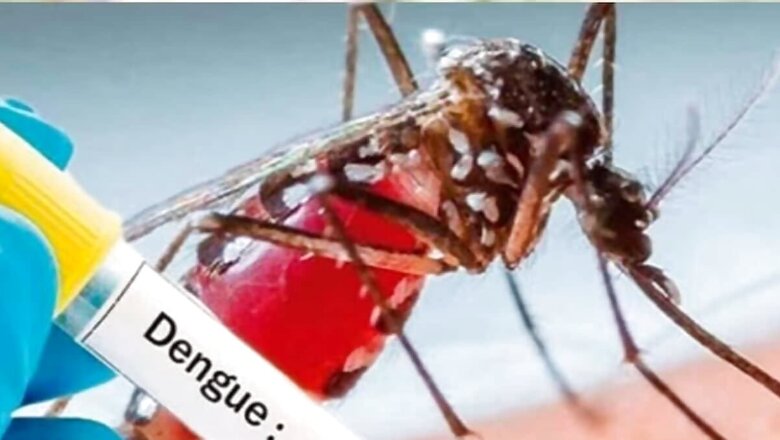
views
Dengue fever, caused by the dengue virus and transmitted primarily by Aedes mosquitoes, is a significant global health concern, particularly in tropical and subtropical regions. Understanding the precautions, symptoms, diagnostic tests, and potential neurological effects of dengue is crucial for effective prevention and management.
Symptoms
Dengue symptoms typically appear 4-10 days after being bitten by an infected mosquito and can range from mild to severe. Dr Vigyan Mishra, Chief of lab, Neuberg Diagnostics, Noida shares common symptoms that include:
- High FeverSudden onset of high fever, often reaching up to 104°F (40°C).
- Severe HeadacheIntense pain behind the eyes.
- Joint and Muscle PainSevere muscle and joint pain, often referred to as “breakbone fever.”
- RashA characteristic rash may appear a few days after the fever starts.
- Nausea and VomitingGastrointestinal symptoms like nausea, vomiting, and abdominal pain.
- FatigueSevere fatigue and weakness can persist for weeks after the acute phase.
- BleedingMild bleeding (such as nosebleeds, gum bleeding, or easy bruising) may occur in some cases.
In severe cases, dengue can progress to dengue haemorrhagic fever (DHF) or dengue shock syndrome (DSS), which are life-threatening conditions requiring immediate medical attention.
Neurological Effects
While dengue is primarily known for its systemic symptoms, it can also have neurological effects, though these are relatively rare. Dr Vinit Banga, Director, Neurology, Fortis Hospital, Faridabad shares neurological complications associated with dengue that would include:
- Dengue EncephalitisInflammation of the brain can lead to symptoms like seizures, altered mental status, and focal neurological deficits.
- MeningitisInflammation of the membranes surrounding the brain and spinal cord, causing headache, neck stiffness, and photophobia.
- Acute Disseminated Encephalomyelitis (ADEM)ADEM is a rare inflammatory condition affecting the brain and spinal cord, resulting in symptoms such as weakness, sensory changes, and impaired coordination.
- Guillain-Barre Syndrome (GBS)This autoimmune disorder can be triggered by dengue, leading to muscle weakness, tingling, and paralysis.
- NeuropathyPeripheral neuropathy, characterized by numbness, tingling, and pain in the limbs, can also occur.
Understanding the potential neurological effects of dengue is essential for early detection and appropriate management. Patients exhibiting neurological symptoms should receive prompt medical evaluation and care to prevent complications.
Precautions
Preventing dengue largely revolves around avoiding mosquito bites and reducing mosquito populations. Dr Mishra shares key precautions:
- Using Insect RepellentsApplying insect repellents containing DEET, picaridin, or oil of lemon eucalyptus can help deter mosquito bites.
- Wearing Protective ClothingLong-sleeved shirts, long pants, socks, and shoes can reduce skin exposure.
- Mosquito Nets and ScreensUsing mosquito nets while sleeping, especially in areas without air conditioning or screened windows, is effective.
- Eliminating Breeding SitesRegularly emptying, cleaning, or covering containers that hold water (such as buckets, flower pots, and tires) can reduce mosquito breeding sites.
- Community EffortsParticipating in community clean-up campaigns and reporting standing water to local authorities can help control mosquito populations.
Common Tests
Diagnosing dengue involves clinical evaluation and laboratory tests. Dr Mishra explains common diagnostic tests:
- NS1 Antigen TestDetects the presence of the dengue virus antigen and is most effective in the early stages of infection.
- PCR TestPolymerase chain reaction (PCR) tests detect viral RNA and are highly specific, and useful for confirming dengue infection.
- IgM and IgG Antibody TestsThese tests detect antibodies produced in response to the infection. IgM antibodies appear early, while IgG antibodies indicate past or recent infection.
- Complete Blood Count (CBC)A CBC can help identify dengue by revealing low platelet counts (thrombocytopenia) and other characteristic changes in the blood.


















Comments
0 comment